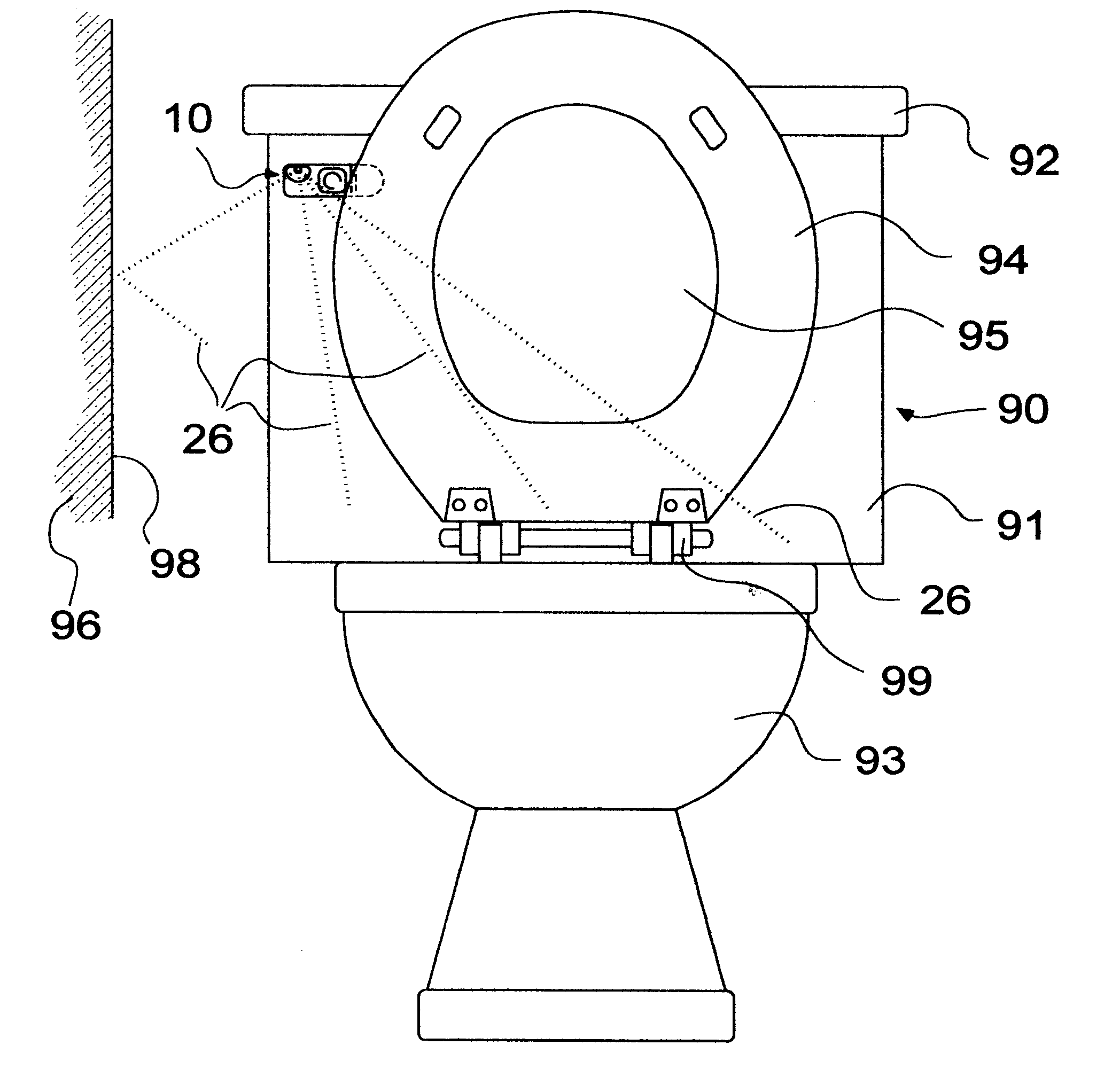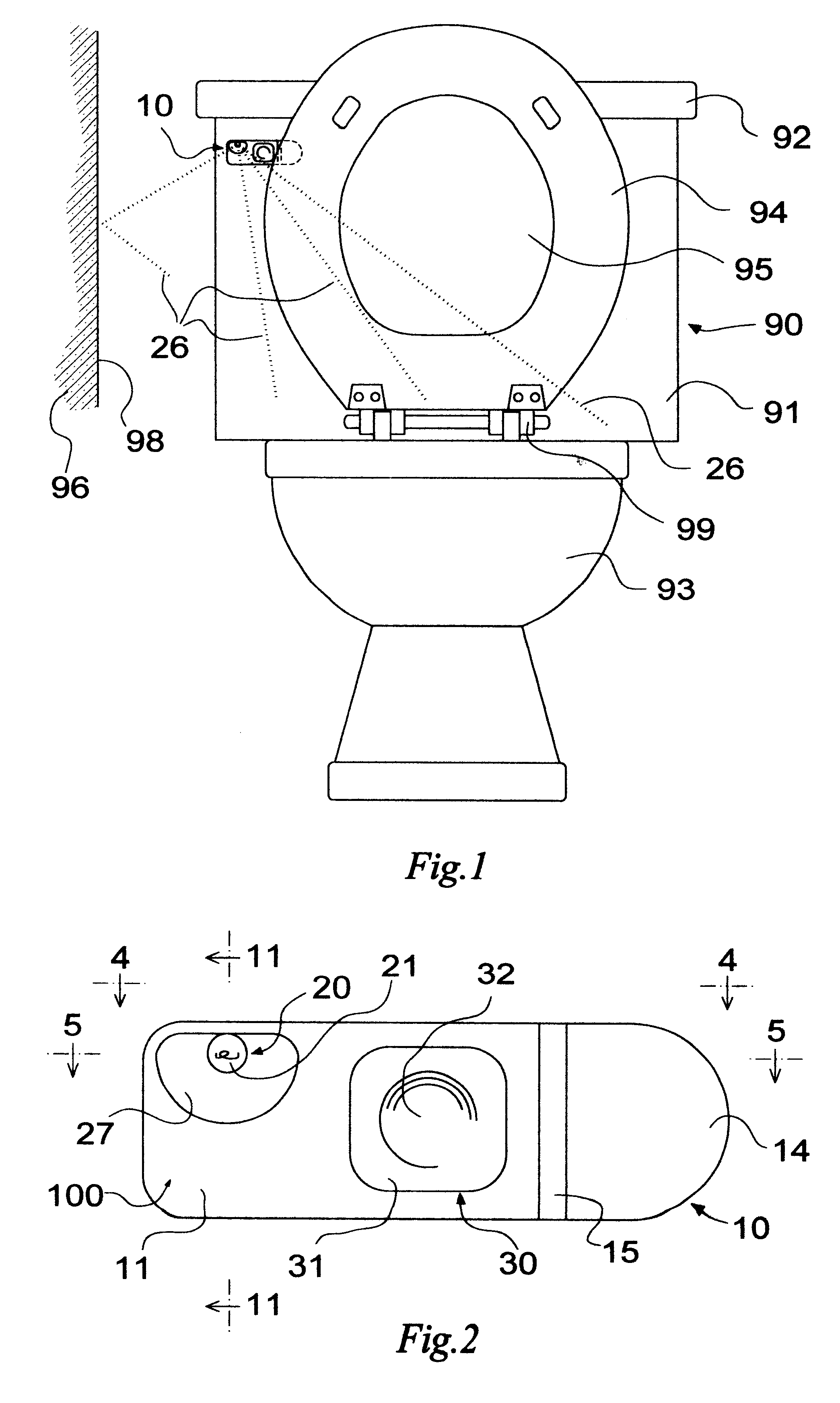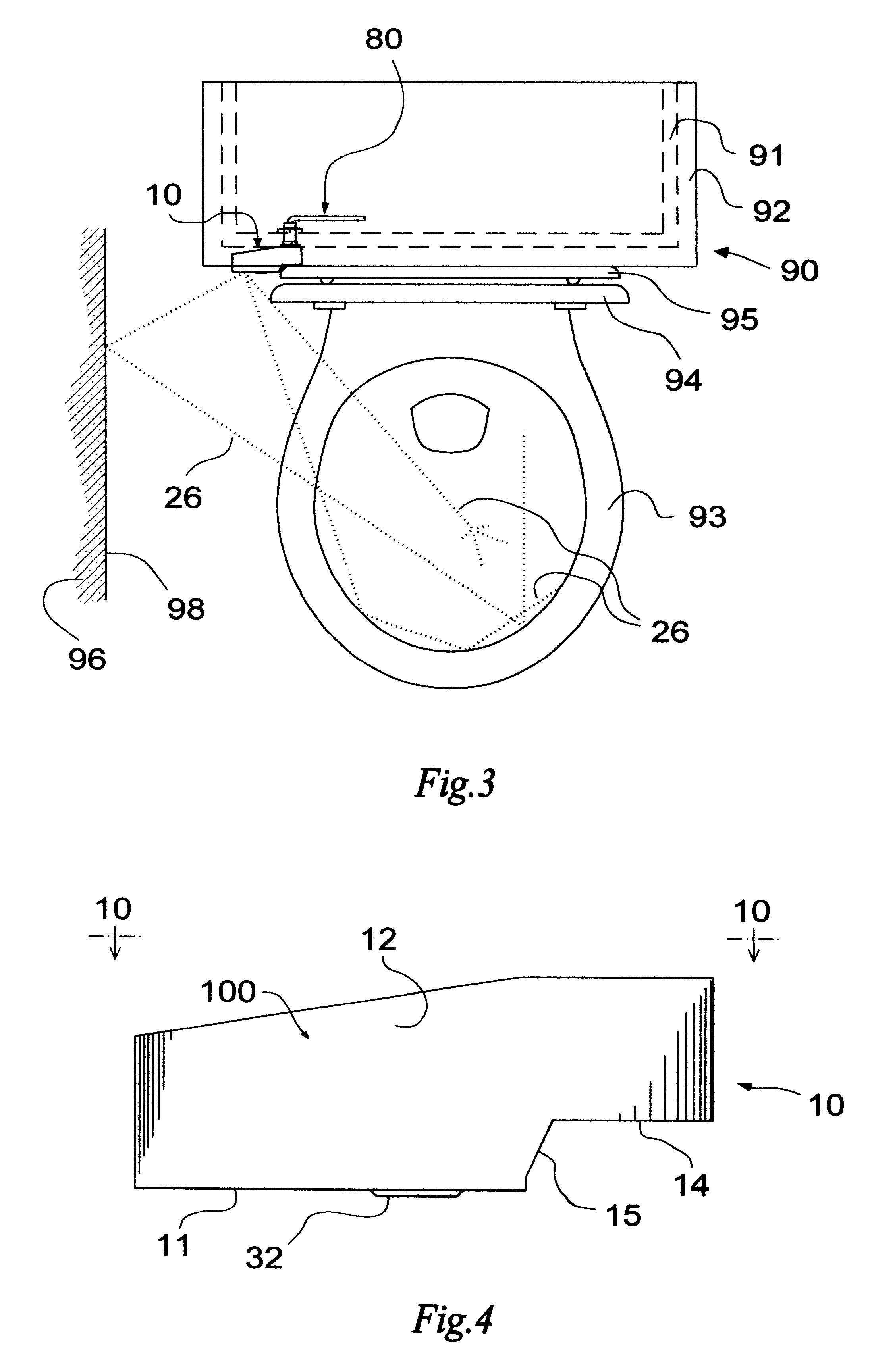Self-extinguishing, flush-handle, night-light
- Summary
- Abstract
- Description
- Claims
- Application Information
AI Technical Summary
Benefits of technology
Problems solved by technology
Method used
Image
Examples
second embodiment
FIG. 13 discloses the present invention identical in all respects to the first, except that now housing 100 may be reversibly mounted on lift-arm 80. This is accomplished by adding rib 78 to housing 100, where rib 78 is sufficiently wide to allow for the provision of threaded bore 76. A set screw may now be installed in bore 76 and used to mate housing 100 reversibly to flattened end 182 of lift arm 80. Bore 76 extends through bottom surface 13 of bottom wall 18.
FIG. 14 shows hole 77 in bottom surface 13 of housing 100. Hole 77 is where threaded bore 76 pierces bottom surface 13 of bottom wall 18.
third embodiment
FIG. 15 shows the present invention, in which the form of the housing has been simplified. Alternate housing 110 has a single, flat, front surface 111 which is not set back over the axis of rotation defined by lift arm portion 82, as described above. The advantage of housing 110 is primarily aesthetic, in that it adopts a minimalist approach to design. The disadvantage of housing 110 is that it may come into contact with top toilet-seat member 95, in some instances.
FIG. 16 shows the alternate embodiment of the invention disclosed in FIG. 15, but as seen from above, in order further to illustrate flat, front surface 111. Ribs 71, 72, and 73 and center post 70 of the embodiment of the invention disclosed in FIGS. 2, 4, 5, and 10 must merely be extended forward. Building a mold for housing 110 would both be somewhat-easier, and therefore somewhat-less expensive, than building a mold for housing 100.
FIG. 17 shows a forth embodiment of the present invention, identical in nearly all respe...
fifth embodiment
FIG. 20 discloses the present invention, in which a wide-angle, light-emitting diode, LED 220, has been introduced as the light-emitting element, in place of incandescent bulb 20. This substitution necessitates reconfiguring and repositioning light-emitting-element holder 28. Alternate light-emitting-element holder 228 is now shown located at the lower, rather than the upper, far corner of housing 100. The indentation formed by light-emitting-element holder 228 involves both front wall 17 and bottom wall 18 of housing 100. Substantially-conical, light-emitting-element holder 228 is shown placed at a 450 angle with respect to wall 17 and 18, so that the axis of holder 228 passes through the line of intersection formed by front surface 11 and bottom surface 13. It would, of course, also be possible to employ the location of holder 228 for an incandescent bulb, as well.
Exterior surface 229 of light-emitting-element holder 228 acts primarily as a reflector, although, even from the wide-...
PUM
 Login to View More
Login to View More Abstract
Description
Claims
Application Information
 Login to View More
Login to View More - R&D
- Intellectual Property
- Life Sciences
- Materials
- Tech Scout
- Unparalleled Data Quality
- Higher Quality Content
- 60% Fewer Hallucinations
Browse by: Latest US Patents, China's latest patents, Technical Efficacy Thesaurus, Application Domain, Technology Topic, Popular Technical Reports.
© 2025 PatSnap. All rights reserved.Legal|Privacy policy|Modern Slavery Act Transparency Statement|Sitemap|About US| Contact US: help@patsnap.com



